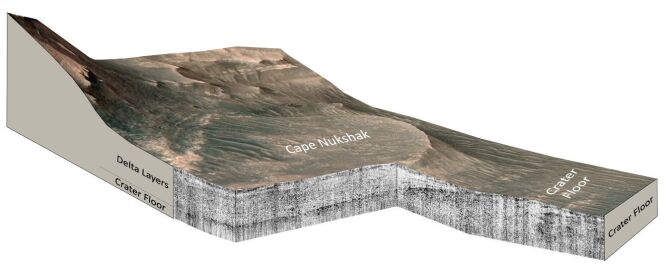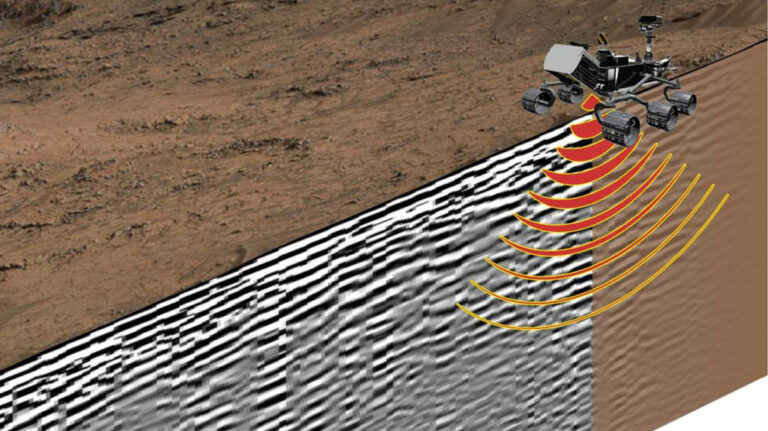Perseverance has mapped ancient sediment layers beneath Jezero Crater using ground-penetrating radar.
Over the course of the past two years, the Perseverance rover from NASA has been doing research on Jezero crater, with the presumption that it was previously home to an old lake. Although satellite imagery and mineral analysis provided support for that conclusion, we now have confirmation of that assessment. The crater that we see now is the product of cycles of erosion and sediment deposition that have occurred over the course of eons, according to data obtained from the ground-penetrating radar of the rover.
The ship Perseverance is equipped with a wide variety of scientific instruments, such as spectrometers, weather sensors, and a multitude of cameras. In addition to that, it is equipped with the Radar Imager for Mars’ subsurface experiment (RIMFAX), which has the capability of revealing subsurface geological features that are up to twenty meters below level. Some geologists believe that the ability of radar to see beyond the surface is a form of cheating, according to David Paige, the lead author of the study, who is affiliated with UCLA.
During the time when the Perseverance was moving across the floor or Jezero Crater, RIMFAX was sending out radar pulses at intervals of ten centimeters. The researchers from UCLA and the University of Oslo spent years testing RIMFAX on Earth, and their efforts were rewarded with the discovery of regular horizontal strata of silt, similar to what one would find in a lakebed on Earth.
In the distant past, Jezero crater was really a lake, according to the experts, and this is the first indication that this was the case. The results of the RIMFAX experiment have shown that the crater was deposited with silt by flowing water during two different time periods. The delta was able to expand far out into the crater as a result of several fluctuations in the lake level that occurred during the latter of the two. These wet times are followed by two episodes of erosion, one of which was responsible for destroying the more expansive delta and transforming it into the delta that still exists today.

The confirmation of Jezero’s aqueous history only serves to increase the level of interest in the rock samples from the Perseverance. At the same time as it is exploring the surface, the rover is finishing the first phase of the ambitious Mars Sample Return mission that NASA is conducting. The one-of-a-kind sample caching mechanism of the rover has already gathered 23 rock cores, and NASA has established a sample store in which a subsequent leg of the mission will be able to collect the sample tubes. On the other hand, the National Aeronautics and Space Administration (NASA) has been criticized for its ineffective administration and its unattainable objectives for the sample return campaign. As we wait for a revised plan, the mission has been put on hold for the time being.
The Curiosity rover from NASA was successful in its mission to Mars, and the Perseverance rover arrived on the planet in February of 2021. It attempted to demonstrate the capabilities of the technology by deploying the Ingenuity Mars helicopter; nevertheless, this remarkable drone ended up failing only this past week. Now that it is on its own, perseverance does not have an aerial scout to guide it in the right direction. On the other hand, Curiosity made history without having a flying companion. The perseverance project is running strong, and it is likely that there are still years left to research the geology of Mars with RIMFAX and other sensors.

